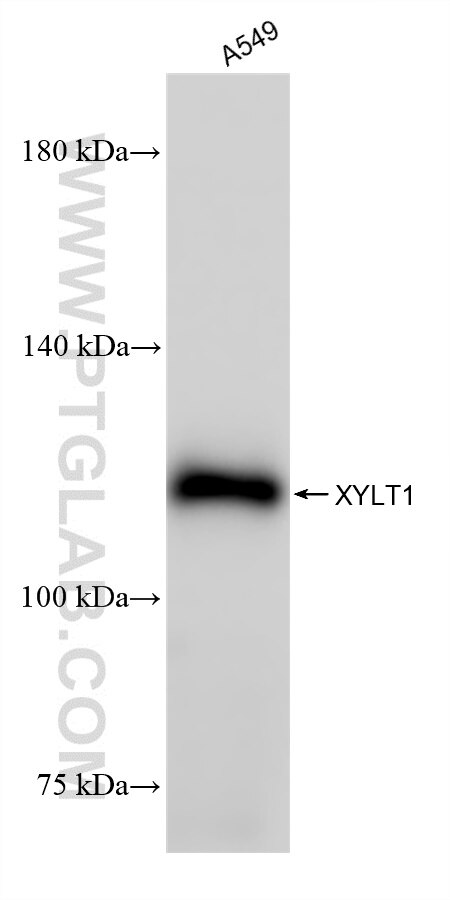Tested Applications
| Positive WB detected in | A549 cells |
Recommended dilution
| Application | Dilution |
|---|---|
| Western Blot (WB) | WB : 1:1000-1:6000 |
| It is recommended that this reagent should be titrated in each testing system to obtain optimal results. | |
| Sample-dependent, Check data in validation data gallery. | |
Product Information
85008-1-RR targets XYLT1 in WB, ELISA applications and shows reactivity with human samples.
| Tested Reactivity | human |
| Host / Isotype | Rabbit / IgG |
| Class | Recombinant |
| Type | Antibody |
| Immunogen | Peptide Predict reactive species |
| Full Name | xylosyltransferase I |
| Calculated Molecular Weight | 108 kDa |
| Observed Molecular Weight | 110~120 kDa |
| GenBank Accession Number | NM_022166 |
| Gene Symbol | XYLT1 |
| Gene ID (NCBI) | 64131 |
| Conjugate | Unconjugated |
| Form | Liquid |
| Purification Method | Protein A purfication |
| UNIPROT ID | Q86Y38 |
| Storage Buffer | PBS with 0.02% sodium azide and 50% glycerol, pH 7.3. |
| Storage Conditions | Store at -20°C. Stable for one year after shipment. Aliquoting is unnecessary for -20oC storage. 20ul sizes contain 0.1% BSA. |
Background Information
XYLT1, also named as XT1, Belongs to the glycosyltransferase 14 family and XylT subfamily. It catalyzes the first step in biosynthesis of glycosaminoglycan. XYLT1 transfers D-xylose from UDP-D-xylose to specific serine residues of the core protein. Initial enzyme in the biosynthesis of chondroitin sulfate and dermatan sulfate proteoglycans in fibroblasts and chondrocytes. The antibody is specific to XYLT1.
Protocols
| Product Specific Protocols | |
|---|---|
| WB protocol for XYLT1 antibody 85008-1-RR | Download protocol |
| Standard Protocols | |
|---|---|
| Click here to view our Standard Protocols |



